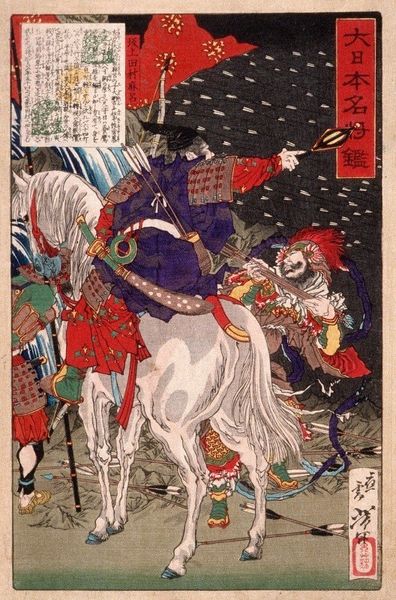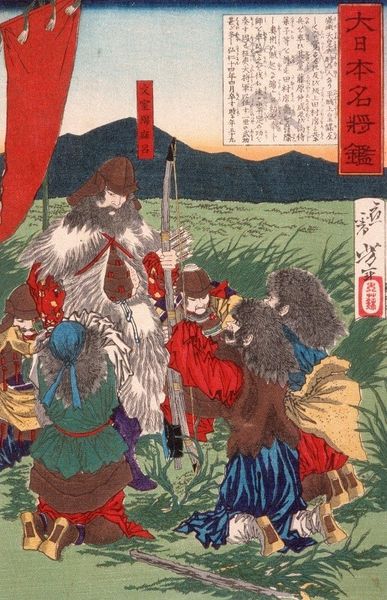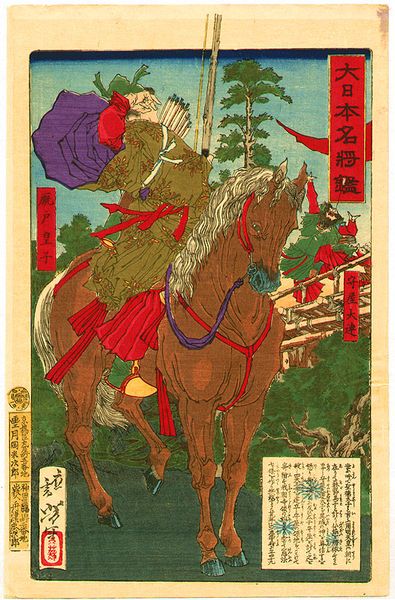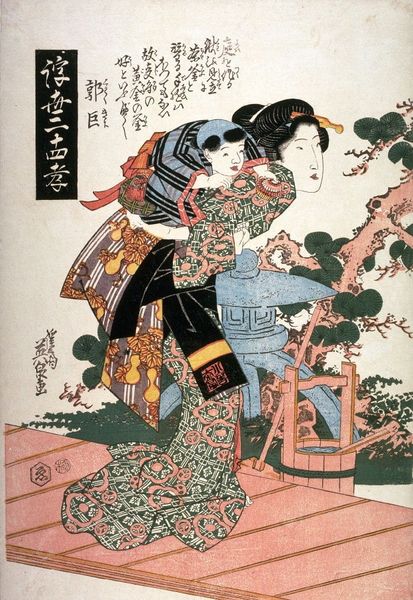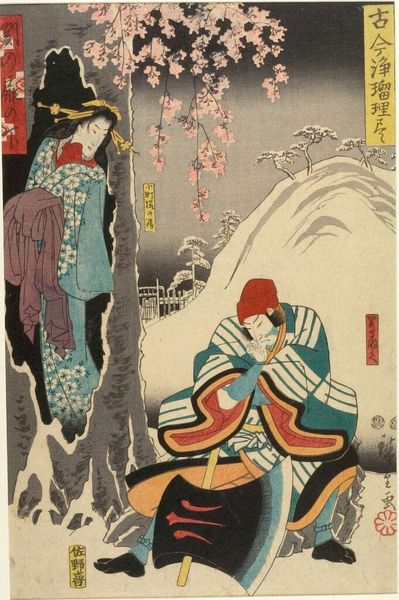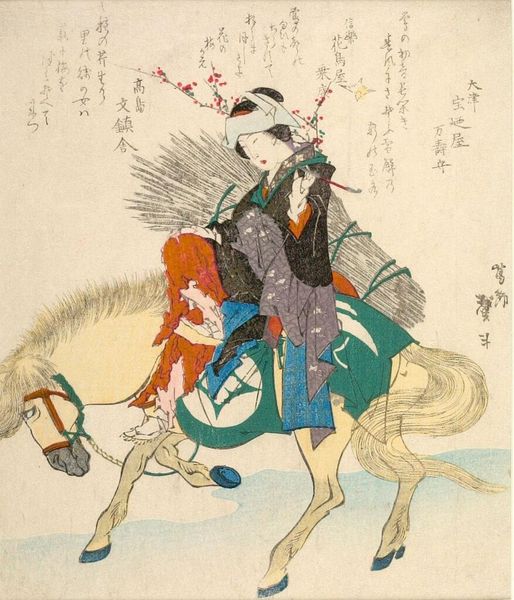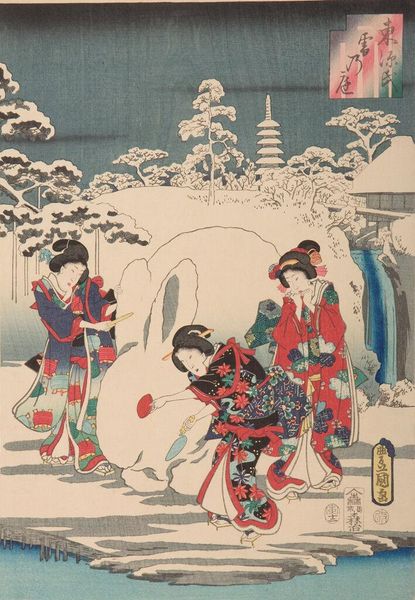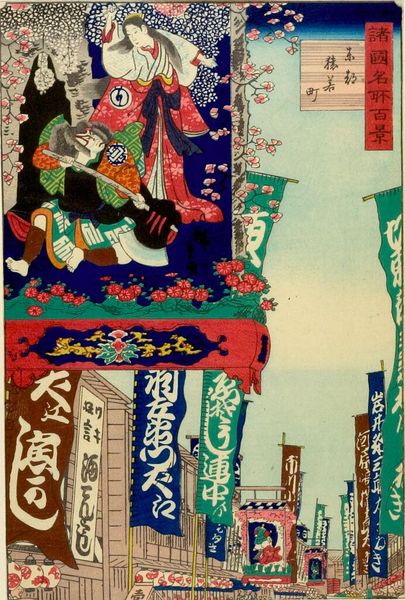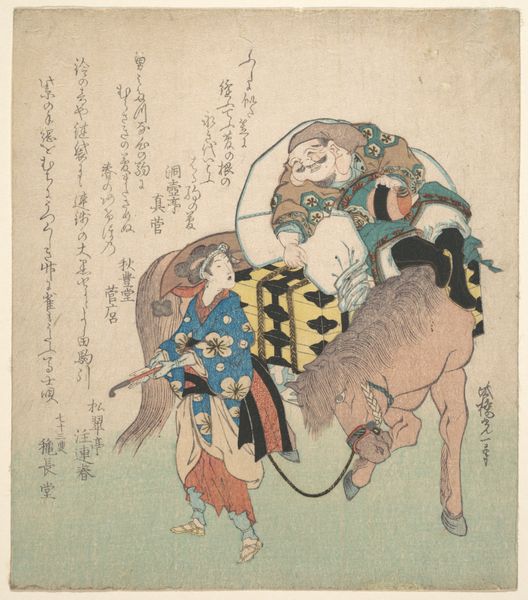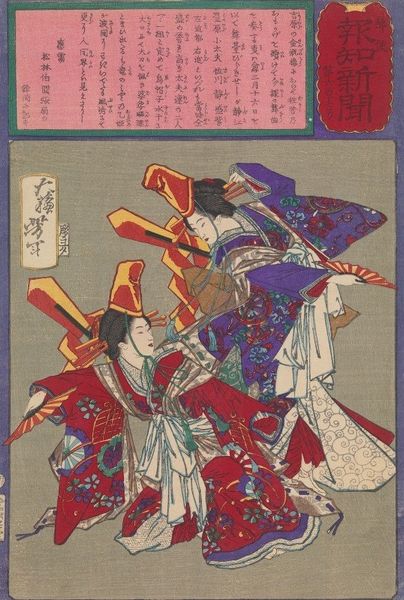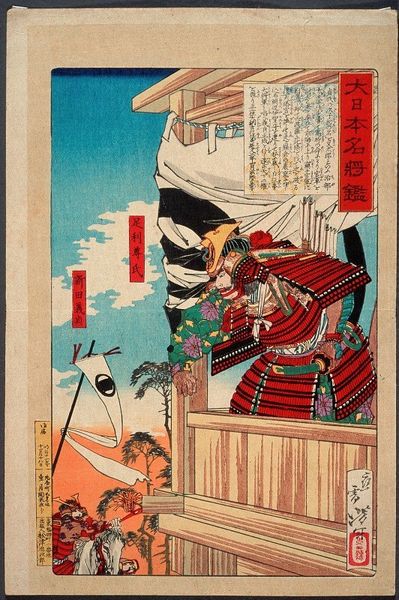
Copyright: Public Domain: Artvee
Editor: This is “Hachimantarō Yoshiie at Nakoso Barrier,” a woodblock print by Tsukioka Yoshitoshi from 1876. The way the warrior is positioned on horseback, almost turning back, gives me a sense of dramatic tension. What are your thoughts when you see this print? Curator: This print offers a window into how historical narratives were being constructed and consumed during the Meiji era. Yoshitoshi was consciously looking back at earlier historical events and reframing them for a modern audience. Ukiyo-e prints like this became powerful tools for shaping public perception. Editor: Shaping public perception... how so? Curator: Consider the date: 1876. Japan was rapidly modernizing, and figures like Yoshiie represented traditional martial values that were both celebrated and questioned. These prints circulated widely. So they were really contributing to a larger discussion about national identity. How do you read Yoshiie’s posture and gaze in this context? Editor: He does seem to be looking back, maybe at the past, but with a modern kind of awareness? Curator: Precisely. Also, think about the museum or gallery context where someone would encounter this print. Its display subtly reinforces certain cultural and historical viewpoints. The very act of selecting it for preservation says something. Editor: I never considered that before. The museum as another layer of interpretation itself. Curator: Indeed! Reflecting on these undercurrents broadens our understanding beyond the artwork. Editor: It's amazing how much context can change my appreciation for a work like this. Curator: Absolutely, and it's an ongoing process, because our contemporary world is always changing the cultural relevance.
Comments
No comments
Be the first to comment and join the conversation on the ultimate creative platform.
